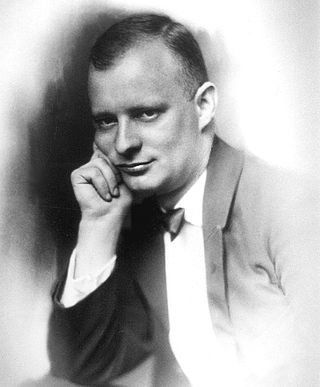Related Research Articles

Clara Josephine Schumann was a German pianist, composer, and piano teacher. Regarded as one of the most distinguished pianists of the Romantic era, she exerted her influence over the course of a 61-year concert career, changing the format and repertoire of the piano recital by lessening the importance of purely virtuosic works. She also composed solo piano pieces, a Piano Concerto, chamber music, choral pieces, and songs.

The Piano Concerto in A minor, Op. 54, by the German Romantic composer Robert Schumann was completed in 1845 and is the composer's only piano concerto. The complete work was premiered in Dresden on 4 December 1845. It is one of the most widely performed and recorded piano concertos from the Romantic period.

Joseph Joachim was a Hungarian violinist, conductor, composer and teacher who made an international career, based in Hanover and Berlin. A close collaborator of Johannes Brahms, he is widely regarded as one of the most significant violinists of the 19th century.
In music, variation is a formal technique where material is repeated in an altered form. The changes may involve melody, rhythm, harmony, counterpoint, timbre, orchestration or any combination of these.

Josef Paul Labor was an Austrian pianist, organist, and composer of the late Romantic era. Labor was an influential music teacher. As a friend of some key figures in Vienna, his importance was enhanced.
The Variations on a Theme by Joseph Haydn, now also called the Saint Anthony Variations, is a work in the form of a theme and variations, composed by Johannes Brahms in the summer of 1873 at Tutzing in Bavaria. It consists of a theme in B♭ major based on a "Chorale St Antoni", eight variations, and a finale. The work was published in two versions: for two pianos, written first but designated Op. 56b; and for orchestra, designated Op. 56a. The orchestral version is better known and much more often heard than the two-piano version.
The Variations on the name "Abegg" in F major is a piece for piano by Robert Schumann, composed between 1829 and 1830, while as a student in Heidelberg, and published as his Opus 1. The name is believed to refer to Schumann's fictitious friend, Meta Abegg, whose surname Schumann used through a musical cryptogram as the motivic basis for the piece. The name Meta is considered to be an anagram of the word "tema" (Latin). Another suggestion is Pauline von Abegg. Apparently, when he was twenty years old, Schumann met her and dedicated this work to her, as witnessed in Clara Schumann's edition of her husband's piano works.

Robert Schumann's Violin Concerto in D minor, WoO 1, written in 1853, was his only violin concerto and one of his last significant compositions. It remained unknown to all but a very small circle for more than 80 years after it was written.

Franz Schubert wrote his Sonata in C major for piano four-hands, D 812, in June 1824 during his second stay at the Esterházy estate in Želiezovce. The extended work, in four movements, has a performance time of around 40 to 45 minutes. It was published as Grand Duo, Op. 140, in 1837, nine years after the composer's death.

Iwan Otto Armand Knorr was a German composer and music teacher.
Blumenstück in D-flat, Op. 19, is a piano work by Robert Schumann, written in 1839. Blumenstück is a series of short, connected and thematically related episodes, of which the second forms a recurring refrain while undergoing changes in both key and mood. It is considered to reflect the amorous human activities with which flowers are associated, rather than as depictions of flowers themselves. The piece takes between six and seven minutes to play.

Gregorio Nardi is an Italian pianist and musicologist.

The first Sonata for viola and piano, also known as Sonata in F, Op. 11, No. 4, by Paul Hindemith was composed in 1919. It is the fourth of five instrumental sonatas comprising his opus 11. This sonata and the following Op. 11 No. 5 for solo viola mark Hindemith's decision to abandon playing the violin in favor of its larger cousin.

Frédéric Chopin's Variations on "Là ci darem la mano" for piano and orchestra, Op. 2, was written in 1827, when he was aged 17. "Là ci darem la mano" is a duet sung by Don Giovanni and Zerlina in act 1 of Mozart's 1787 opera Don Giovanni. In a manuscript of this composition, dedicated to his schoolfriend Tytus Woyciechowski, the latter replied on the title page in written form „J’accepte avec plaisir“. Chopin's work inspired Robert Schumann's famous exclamation: "Hats off, gentlemen, a genius." The work is often recorded and played in concert. A typical performance lasts from 17 to 19 minutes. One autograph of the version for solo piano is held by the Austrian National Library.
Emil Bohnke was a German violist, composer and conductor active in Berlin.

Bunte Blätter, Op. 99, is a collection of piano pieces by Robert Schumann assembled from earlier unpublished pieces after the success of the Album for the Young , Op. 68. Upon publication the pieces were issued both as a complete set and individual pieces, the latter in differently colored covers.
Märchenerzählungen, Op. 132, is a trio composition by Robert Schumann in four movements for clarinet, viola and piano. He composed the clarinet-viola-piano trio in B-flat major, between 9 and 11 October 1853. The movements are connected by a motif (Kernmotiv). The work is dedicated to Schumann's pupil Albert Dietrich, and was published in 1854 by Breitkopf & Härtel.
Olivier Chauzu is a Franco-Spanish classical pianist.
References
- 1 2 Wolf-Dieter Seiffert (1995). "Preface to Thema mit Variationen (Geistervariation)" (PDF). G. Henle Verlag . Retrieved 6 July 2012.
- ↑ Fiona Maddocks (3 September 2011). "Schumann: Geistervariationen – review". The Observer . Retrieved 6 July 2012.
- ↑ Michael Tumelty (3 October 2011). "Schumann's Ghost Variations reveal the dark side of the composer's art". The Herald . Glasgow. Retrieved 6 July 2012.